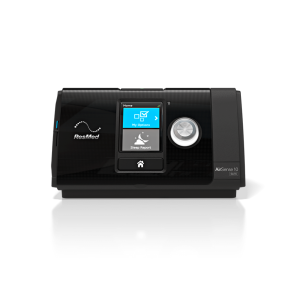Fact Checked
Intus Healthcare’s writers, customer service team, and sleep experts review and ensure this information is accurate.
Last updated on March 7th, 2024 at 10:36 am
Can Sleep Apnoea be cured naturally?
Obstructive Sleep Apnoea (OSA) is one of the most common sleep disorders affecting millions of people worldwide.
Around 85% of sufferers don’t know they have OSA(1), labelling it as chronic snoring, constant tiredness or mood swings. The symptoms of OSA can make getting a good night’s sleep seem impossible.
So, does Sleep Apnoea ever go away? Unfortunately, it can’t be cured, but it can be treated.
This article will examine why Sleep Apnoea is destructive and how to treat it.
Table of Contents
What causes Sleep Apnoea?
Obstructive Sleep Apnoea affects millions of people worldwide and is one of the most common sleep disorders. The condition is caused by the relaxation of the throat muscles, blocking the airway. These frequent airway obstructions cause continuous breathing disruptions during sleep.
For some sufferers, the Sleep Apnoea only occurs when sleeping on their backs, known as Positional Sleep Apnoea (POSA). Side sleeping can significantly improve POSA as it helps to reduce airway obstructions by creating more room at the back of the throat.
What can happen if Sleep Apnoea goes untreated?
Research has found that untreated Sleep Apnoea is related to several other serious and fatal health conditions.
When you do not treat your sleep disorder, you are not only putting yourself at risk of sleepiness, headaches and mental health complications.
You also put yourself at risk of developing the following:
Type 2 diabetes – Untreated OSA can increase your blood sugar levels, increasing the risk of diabetes. Studies found that those with Sleep Apnoea are at double the risk of diabetes.
Cardiovascular complications – The heart must work harder when Sleep Apnoea is left untreated. Studies have found that untreated OSA puts you at an increased risk of a stroke by 2-3 times and an increased risk of a heart attack by 30%(2). Another study found that around 47% of people with heart failure had OSA, and patients have four times the risk of developing atrial fibrillation(3).
High blood pressure – Also known as hypertension, strains the cardiovascular system (blood circulatory system). Hypertension affects around 30-40% of Sleep Apnoea patients(4).
Car accidents – Daytime sleepiness is a sign of Sleep Apnoea, making concentrating difficult. Driving without treatment for your sleep disorder puts you and those around you at risk. Road accidents are not uncommon for those with OSA; falling asleep at the wheel is serious and life-threatening. Driving fatigue causes around 10-20% of road crashes; take an In-Home Sleep Test if you could have OSA.
Untreated Sleep Apnoea life expectancy
Living with untreated Sleep Apnoea can decrease your life expectancy due to the increased chance of developing other health complications. People with severe Sleep Apnoea have three times the risk of dying due to any cause compared with people who do not have Sleep Apnoea(6).
What are the warning signs of Sleep Apnoea?
Obstructive Sleep Apnoea may have never crossed your mind, but the symptoms may sound familiar. These include:
- Morning headaches
- Excessive daytime sleepiness
- Mood swings and mental health problems
- A low sex drive
- Choking during sleep
- Poor memory
- Snoring
- Waking up frequently during the night
- Waking up with a dry mouth or sore throat
Home Sleep Apnoea test
If you experience some or all of these symptoms, you could have OSA. To find out, take a sleep test.
A private Sleep Apnoea test gives you results in two working days, and your results are private to you. The test is simple to use and requires only one night of sleep data.
How long does it take for Sleep Apnoea treatment to work?
CPAP therapy is the most widely used, effective treatment method.
Treating OSA helps sufferers avoid the risk of developing other health complications.
Please be aware that treatment for Sleep Apnoea does not cure the disorder; it only helps manage it.
Sleep Apnoea treatments
What is CPAP therapy?
CPAP therapy includes a CPAP machine that provides a continuous flow of pressurised air to keep the airway open. The pressurised air is delivered to the user through a tube to a CPAP mask. The machine helps to prevent breathing pauses and lower the apnoea hypopnoea index.
A study of 88,000 people found that using a CPAP machine significantly reduced the risk of all-cause mortality(7).
To purchase or receive a CPAP machine from the NHS, you will need to have documentation stating you have Sleep Apnoea. We offer a selection of popular machines and masks and offer expert advice to help you settle into therapy.
Related post: What is a CPAP machine does, and how does it work?
Alternative treatments
Although CPAP therapy is the most widely used treatment method, there are alternative options. These include:
Oral devices: Mandibular Advancement Devices (MADs) are customisable mouthguards. They gently pull your tongue and lower jaw forward to create more space at the back of the throat. This helps to stop obstructions, creating more airflow during sleep. MADs are usually recommended for those with milder Sleep Apnoea.
Positional therapy: There are a variety of different positional therapies; some include the Somnibel Positional Sleep Trainer and Anti-snoring belt. These options use small vibrations when the user moves onto their back. The light vibration encourages you to return to your side to reduce the risk of an apnoea event. Positional therapy is typically only recommended to POSA sufferers.
Nasal irrigation: Although this is not a treatment alternative, nasal irrigation can provide many benefits to OSA. Sinus rinsing helps to remove congestion from allergies and colds to make breathing easier. Congestion can worsen the symptoms of Sleep Apnoea, so using a nasal rinse can help to make treatment more effective.
What is a lifestyle change that can help treat Sleep Apnoea?
Treatment and lifestyle changes can eliminate all the symptoms of Sleep Apnoea so you can lead a happy and healthy life.
Lifestyle changes that can help include:
- Losing weight
- Quitting smoking
- Consuming less alcohol
- Treating allergies and congestion to keep the nasal passages open, you could try the SinuPulse Elite Nasal Irrigator.
- Changing your sleeping position, e.g. sleeping on your side.
- Regularly exercising
FAQs
Could there be a Sleep Apnoea cure in the future?
Research is constantly evolving, and treatments are improving as the years go on to improve patient comfort and compliance. While there is no cure, studies and avenues within sleep medicine are being developed to understand the condition better. Future advancements in medical science and technology may lead to innovative approaches that address the underlying causes of Sleep Apnoea, potentially offering a cure or more effective long-term treatments. Research focuses on understanding the mechanisms contributing to airway obstruction during sleep and developing targeted interventions to prevent or reverse these obstructions. Additionally, emerging therapies such as hypoglossal nerve stimulation and upper airway surgery show promise in treating certain types of Sleep Apnoea. Although there is no cure for Sleep Apnoea, continued research and innovation offer hope for improved outcomes and quality of life for individuals affected by this sleep disorder.
How do I know my treatment is working?
When OSA is treated, the symptoms are reduced or completely prevented. Firstly, monitor changes in your symptoms and overall well-being. You should wake up feeling refreshed from a good night’s sleep and feel energised. Those who use a CPAP machine can track their therapy data on their machine screen to view their therapy quality. Many newer devices feature patient support apps and websites for further treatment guidance and data. These applications make tracking therapy progress easy.
Can symptoms improve or worsen over time with treatment?
If you have Sleep Apnoea and are using treatment advised by your doctor or sleep clinician, your symptoms should reduce, and you should feel the benefits. Symptoms can fluctuate over time, even with treatment. In some cases, symptoms may improve gradually as individuals adapt to their treatment and experience better sleep. Adherence to therapy, lifestyle modifications, and addressing underlying health conditions can contribute to symptom improvement.
However, it’s also possible for symptoms to worsen if treatment adherence declines, lifestyle factors change, or the effectiveness of the chosen treatment diminishes over time. Regular monitoring of symptoms, follow-up appointments with healthcare providers, and adjustments to the treatment plan as needed can help manage any changes in symptoms effectively.
It is important to note that it can take time to adjust to using your treatment, so there may be a time when you start to experience symptoms and do not feel improvement straight away. For those who use CPAP, getting used to the equipment can take up to a month as you adapt to it. You can try to use it throughout the day to make it easier to settle into using your equipment.
Helpful articles:
Are there alternatives to CPAP?
How your sleeping position affects your sleep
Round up
OSA can’t be cured, but there are many effective treatment options.
If you show signs of Sleep Apnoea, take an In-Home Sleep Apnoea test to determine if you have the disorder.
Contact us or visit our FAQS for any help or advice regarding Obstructive Sleep Apnoea.
REFERENCES
- Nunez, C. M. (2019, July 30). More than 936 million have obstructive sleep apnoea worldwide. ResMed UK. Available at: https://www.resmed.co.uk/patient/resources/sleep-apnoea-blog/936-million-have-osa-worldwide/. Accessed: 21.08.23.
- YaleNews. (2007). Sleep apnea increases risk of heart attack and diabetes. Avilable at: https://news.yale.edu/2007/05/24/sleep-apnea-increases-risk-heart-attack-and-diabetes. Accessed: 21.08.23.
- Javaheri, S., Caref, E. B., Chen, E., Tong, K. B., & Abraham, W. T. (2011). Sleep apnea testing and outcomes in a large cohort of Medicare beneficiaries with newly diagnosed heart failure. American Journal of Respiratory and Critical Care Medicine, 183(4), 539–546. https://doi.org/10.1164/rccm.201003-0406oc. Accessed: 21.08.23.
- Somers, V. K., White, D. P., Amin, R., Abraham, W. T., Costa, F., Culebras, A., Daniels, S., Floras, J. S., Hunt, C. E., Olson, L. J., Pickering, T. G., Russell, R., Woo, M., & Young, T. (2008). Sleep apnea and cardiovascular disease. Journal of the American College of Cardiology, 52(8), 686–717. https://doi.org/10.1016/j.jacc.2008.05.002. Acccessed: 21.08.23.
- The Royal Society for the Prevention of Accidents. (2020). Driver Fatigue and Road Accidents Factsheet. Birmingham, Edgbaston; ROSPA. Accessed: 21.08.23.
- AASM (2008) Study shows that people with sleep apnea have high risk of death, American Academy of Sleep Medicine – Association for Sleep Clinicians and Researchers. AASM. Available at: https://aasm.org/study-shows-that-people-with-sleep-apnea-have-a-high-risk-of-death/. Accessed: 22.08.23.
- Pépin, J.-L. et al. (2022) ‘Relationship between CPAP termination and all-cause mortality’, Chest, 161(6), pp. 1657–1665. doi:10.1016/j.chest.2022.02.013. Accessed: 21.08.23.










